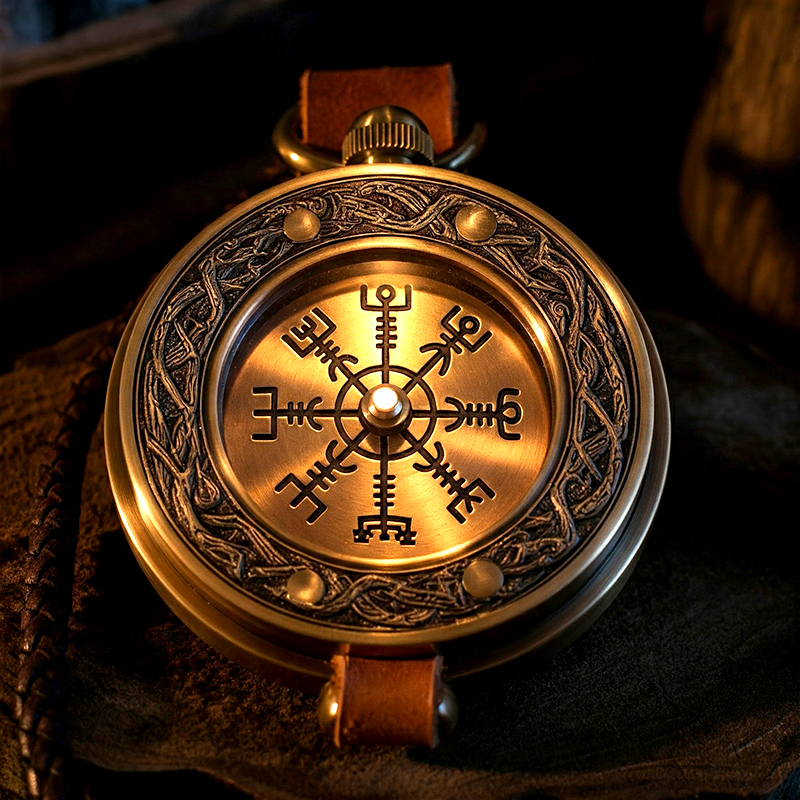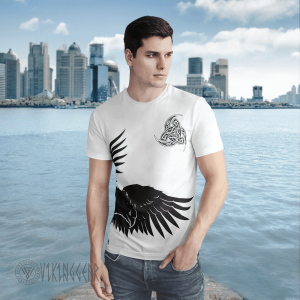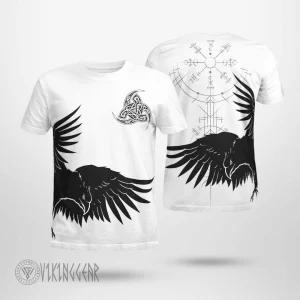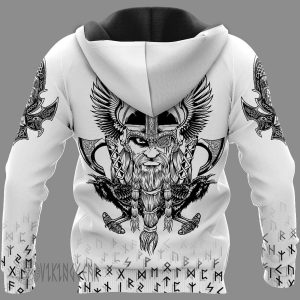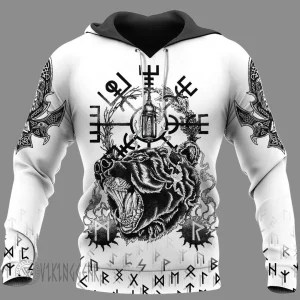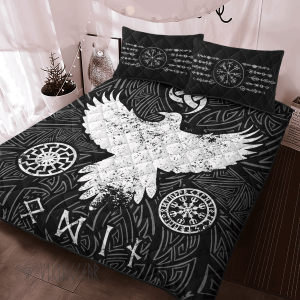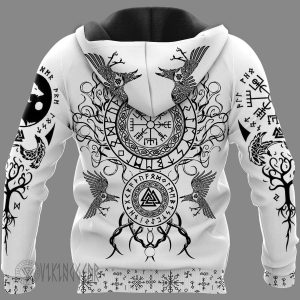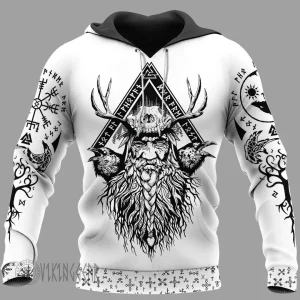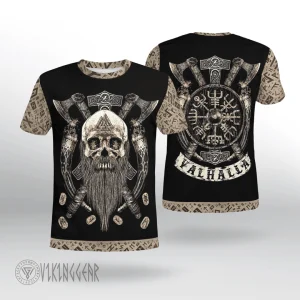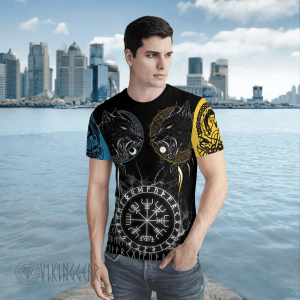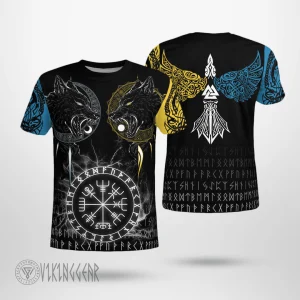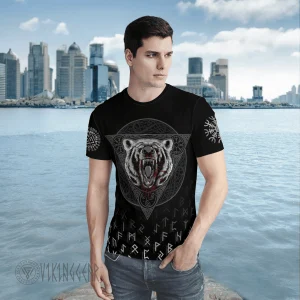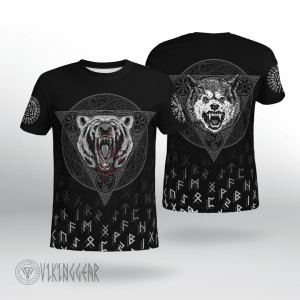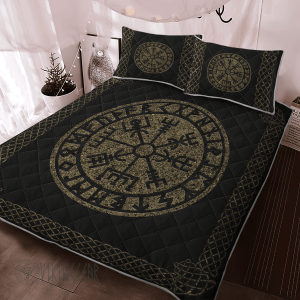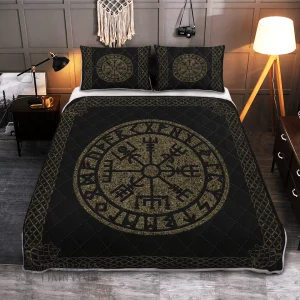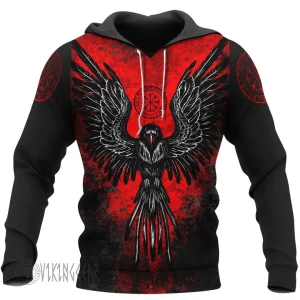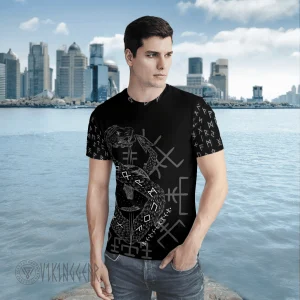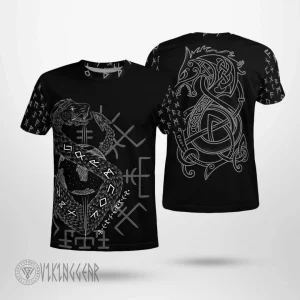Viking Blog
Viking Compass: 10 Fascinating Mysteries Behind This Symbol of Strength and Spiritual Guidance
The Vegvisir, or Viking Compass, is a mysterious, powerful symbol. It has a deep spiritual meaning. Scholars debate its origins and meaning. But the Vegvisir captivates with its mystique and symbolism.
We explore ten mysteries about the Viking compass. This ancient symbol has inspired and guided people for centuries.
1. Mysterious and Contested Origins
Unlike other Viking symbols, like the Mjölnir or Valknut, the Vegvisir does not appear in Viking Age finds. Its earliest mention is in the Huld Manuscript, a 17th-century Icelandic grimoire. This late appearance has sparked debate among historians. Is it a post-Viking creation, influenced by European magic? Or could it have ancient, now-lost roots, preserved through oral lore?
2. “Wayfinding” – Literal or Metaphorical?
The Vegvisir is often described as a “magical compass” used by Vikings for navigation. Viking sailors used advanced techniques. They included celestial navigation, wind patterns, and landmarks. This raises a question. Was the Vegvisir a real navigation tool? Or, does it symbolize a deeper, metaphorical guide to finding one’s true purpose in life?
3. Viking Compass & Galdrastafir – Icelandic Rune Magic?
The Vegvisir has an eight-armed design. It resembles Galdrastafir, magical symbols of Icelandic rune magic. Scholars suggest the Vegvisir is a special version of these symbols. They made it for protection, guidance, and spiritual alignment. Could the Vegvisir bridge Viking Age mysticism and later Icelandic magical practices?
4. Unraveling the Enigmatic Symbols
Each of the Vegvisir’s eight arms represents a cardinal or intercardinal direction. Yet, the specific runes or symbols inscribed on these arms remain undeciphered. Are they for decoration? Or do they hide cosmic or spiritual knowledge?
5. Navigating the “Storms of Life”
The Vegvisir is a charm. It ensures the bearer “never loses their way in storms or bad weather, even when the way is not known.” The “storm” may mean literal seafaring challenges. It could also represent life’s hardships. The Vegvisir is a strong symbol of resilience. It helps us find our “true north” in troubled times.
6. More Than Protection
For the Vikings, the Vegvisir was more than a charm. It was a spiritual bridge to the Norse gods and the unseen world. It symbolized enlightenment, guiding individuals toward self-understanding and universal truths.
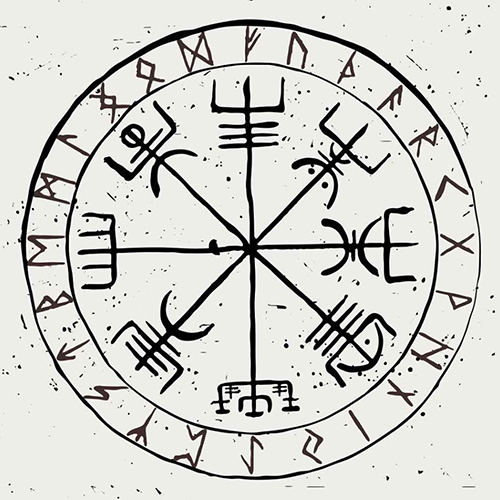
7. A Modern Resurgence
Once obscure, the Vegvisir has surged in popularity in recent decades. It now plays a significant role in movies, tattoos, jewelry, and art. A new interest in Viking culture and Norse spirituality has revived this ancient symbol. It is now a beloved icon of strength and guidance.
8. Versatile Applications in Modern Life
Today, people embrace the Vegvisir in various forms. People wear it as a protective amulet. They tattoo it as a symbol of inner strength. They use it in décor to promote balance and harmony. Its adaptability highlights its enduring appeal across cultures and contexts.
9. Connecting with Your Inner Compass with the Viking Compass
The Vegvisir isn’t about external navigation; it’s a tool for inner exploration. It inspires self-discovery. It encourages trust in our intuition. It reminds us to pursue our unique paths with courage and clarity.
10. A Timeless Symbol of Strength
Its origin and meaning are a mystery. Yet, the Vegvisir is a timeless symbol of strength and guidance. It reflects our wish for resilience and purpose. We want to face life’s challenges with grace.
The Viking Compass is more than a historical artifact or mystical design. It reminds us of the human spirit’s ability to endure. It can adapt and find meaning in every journey, whether it’s the vast seas or life’s storms.

